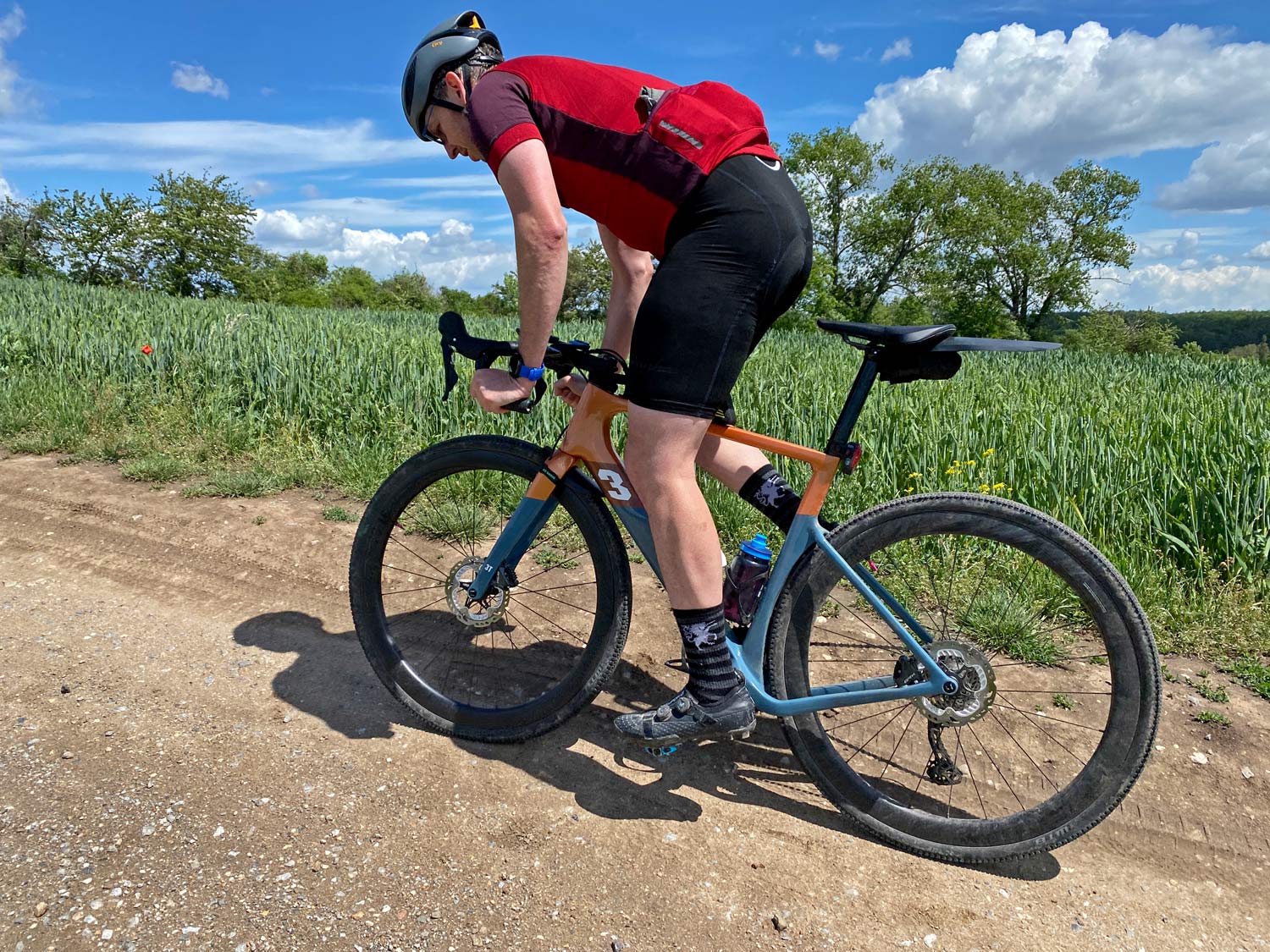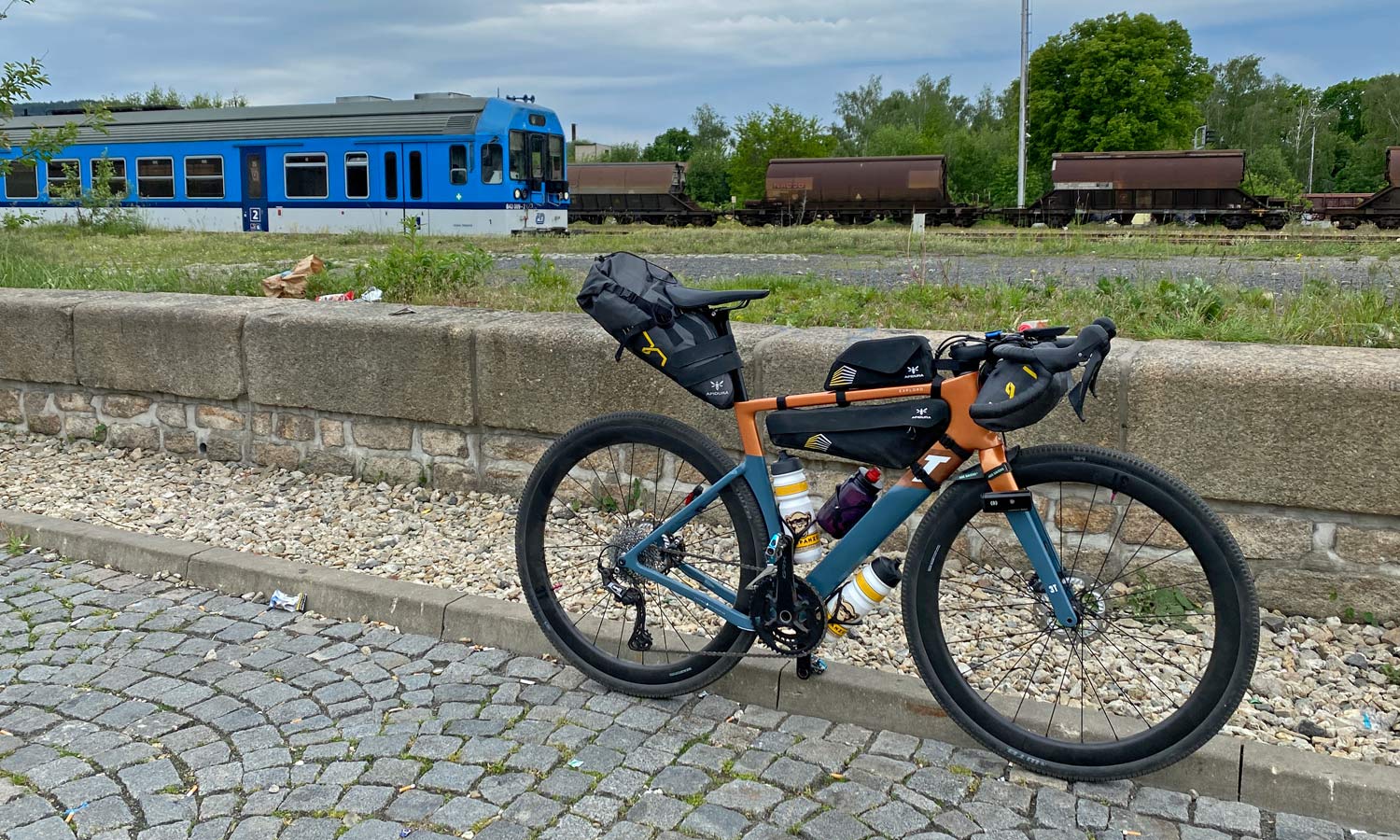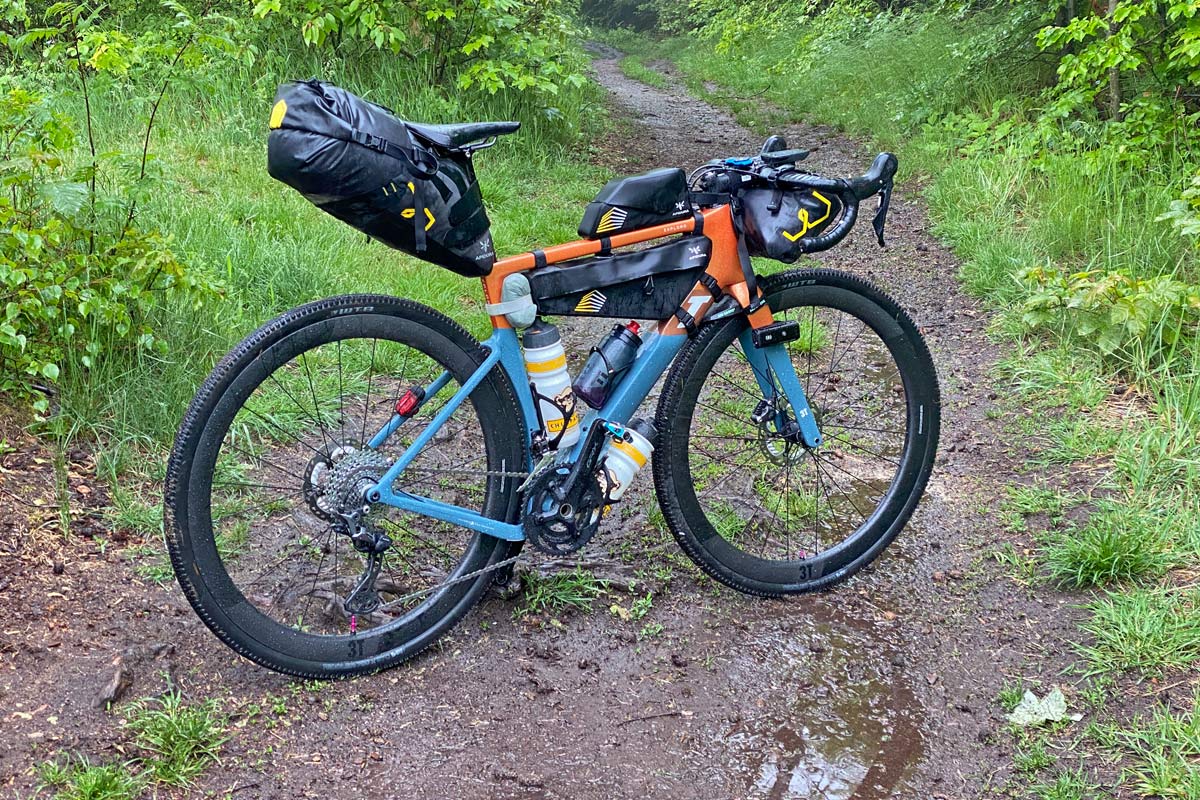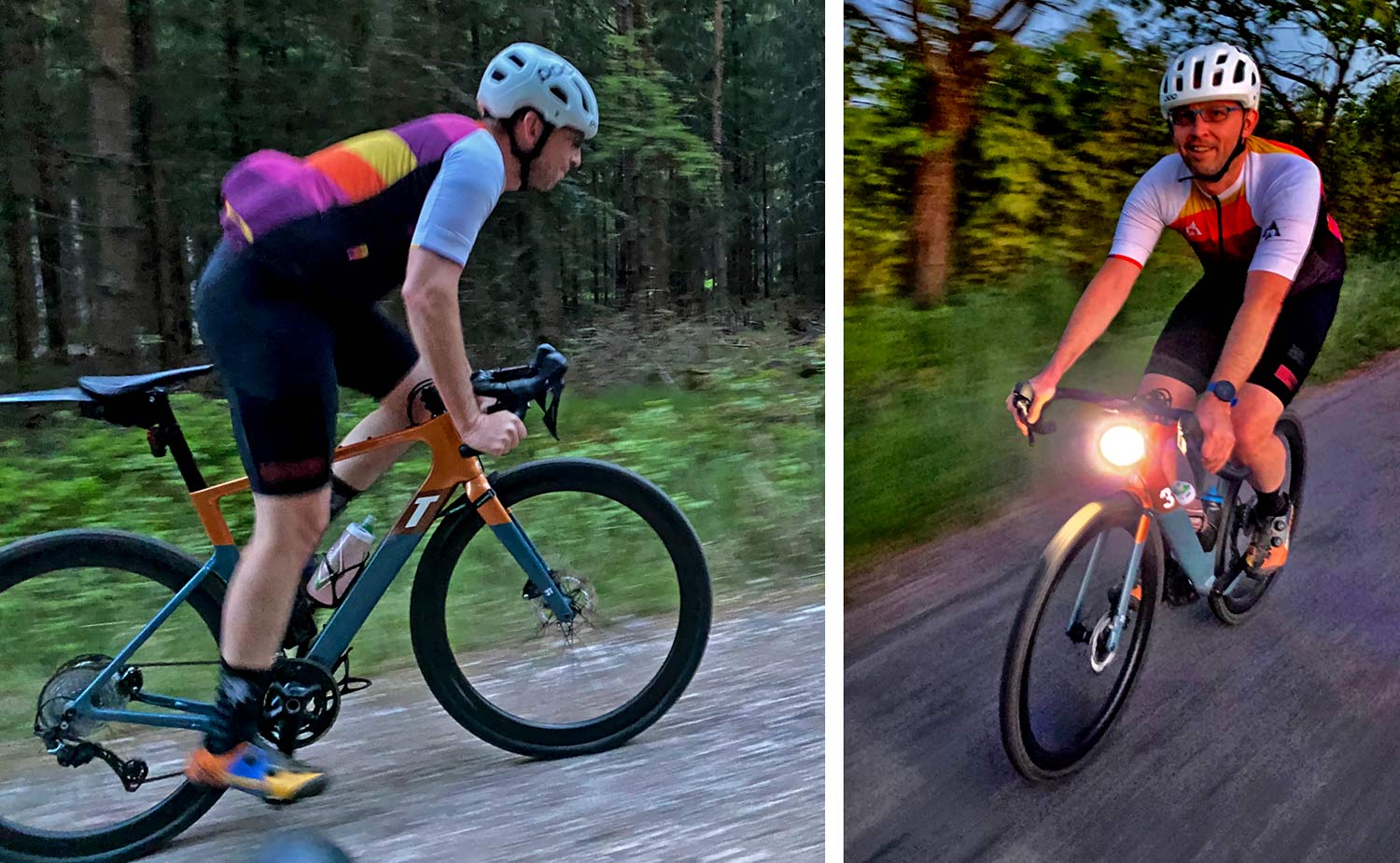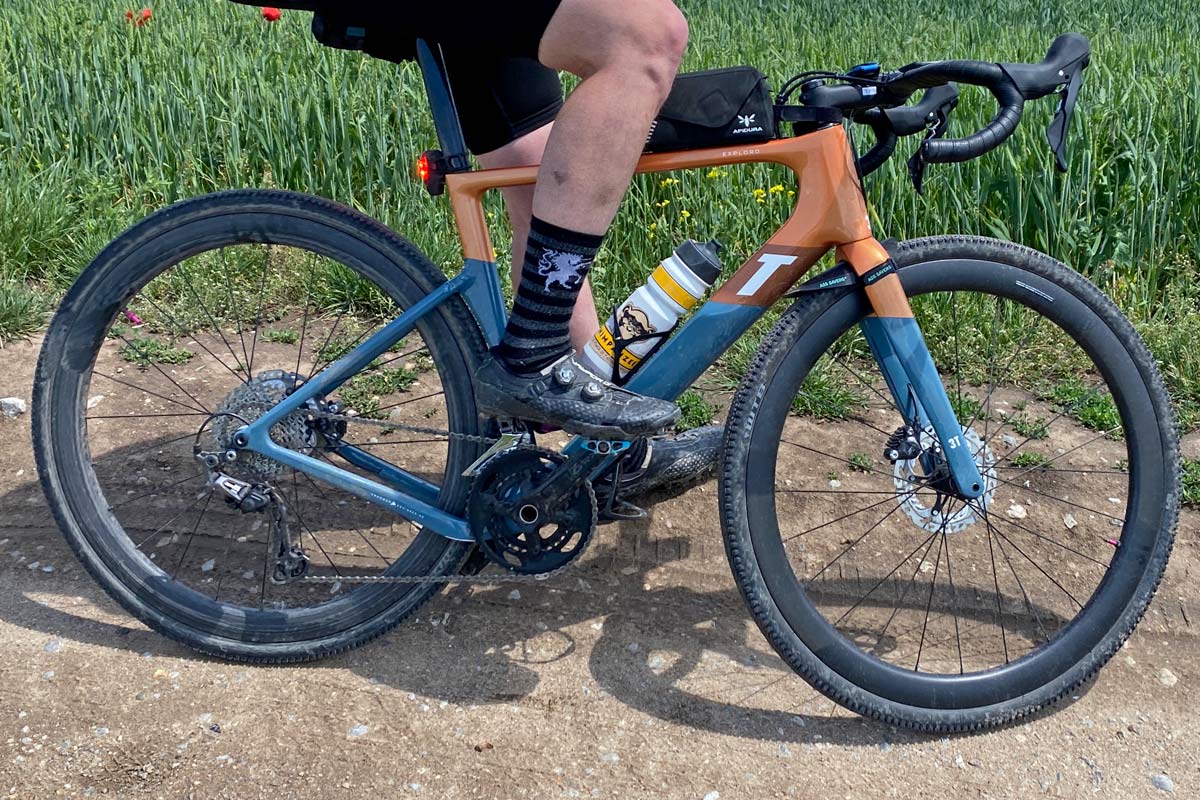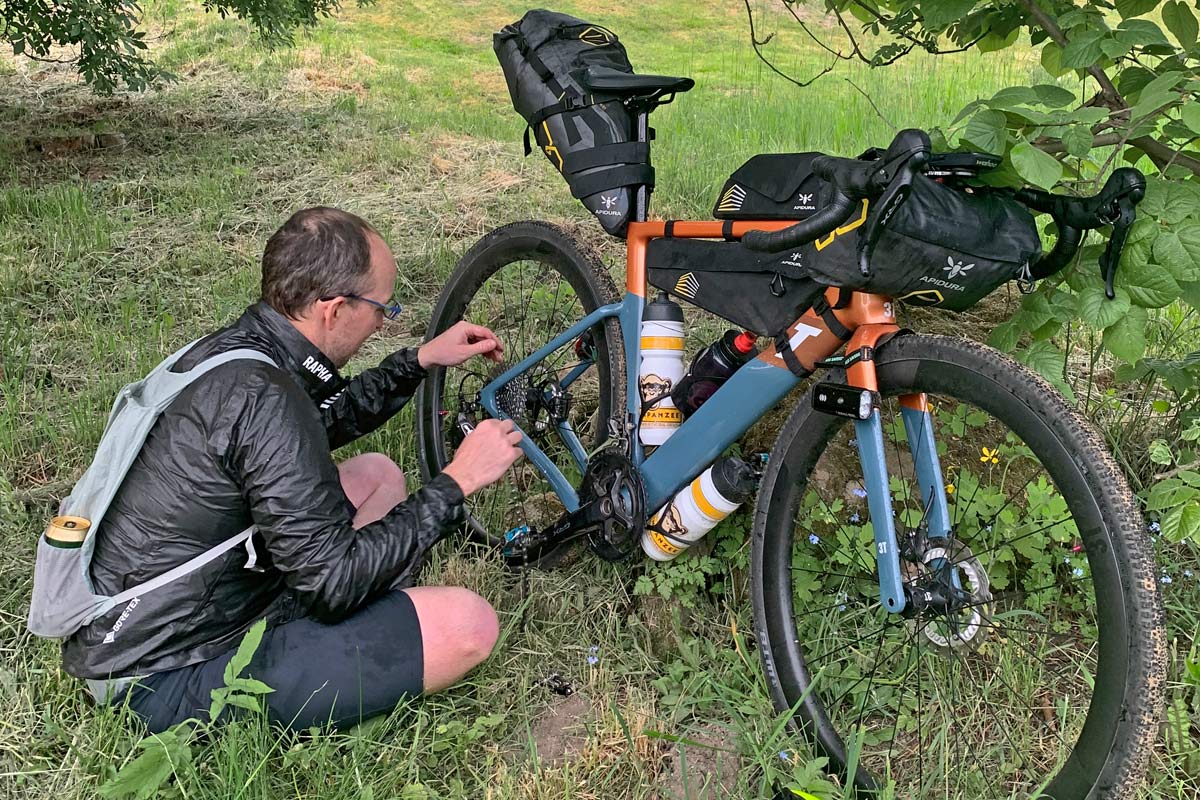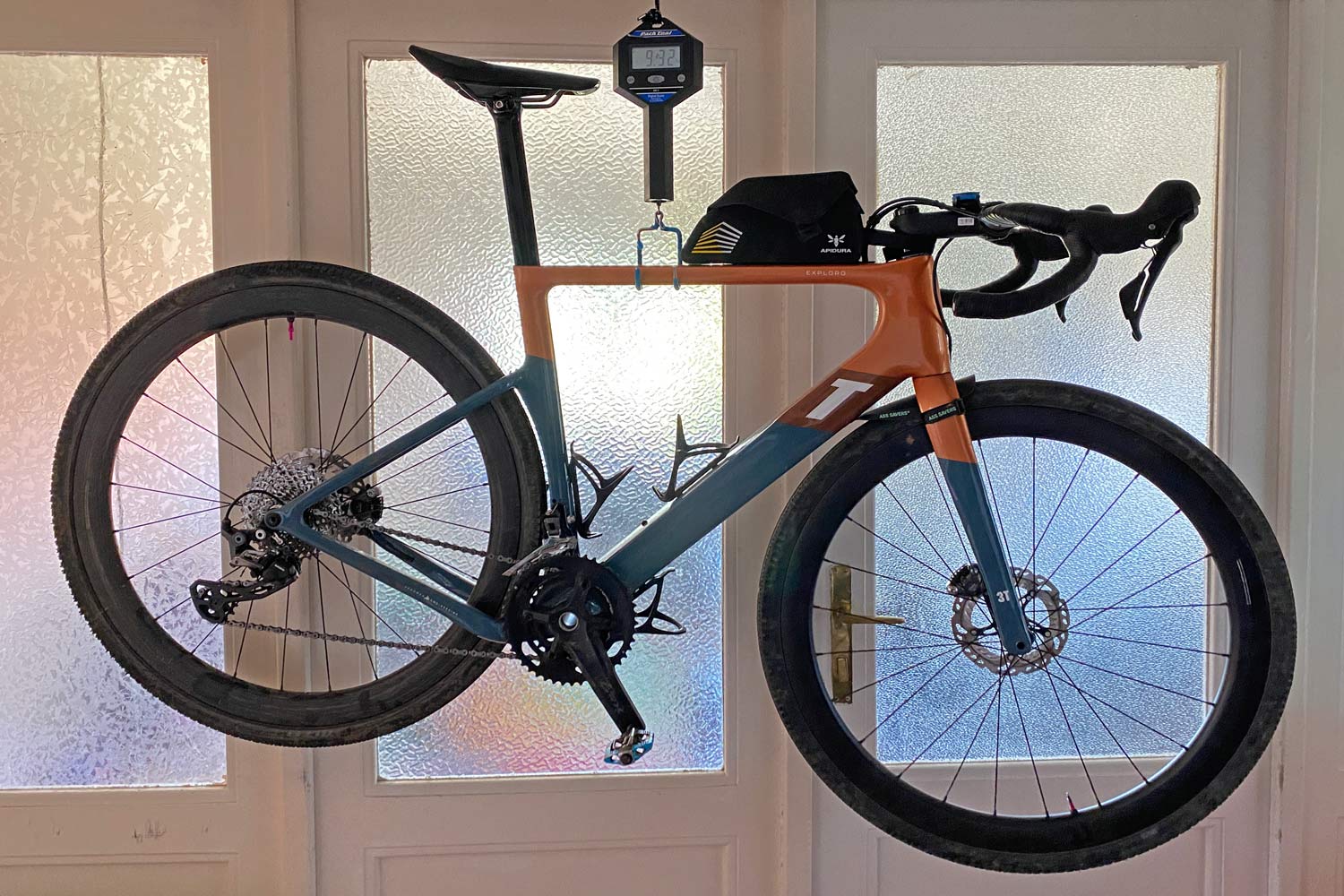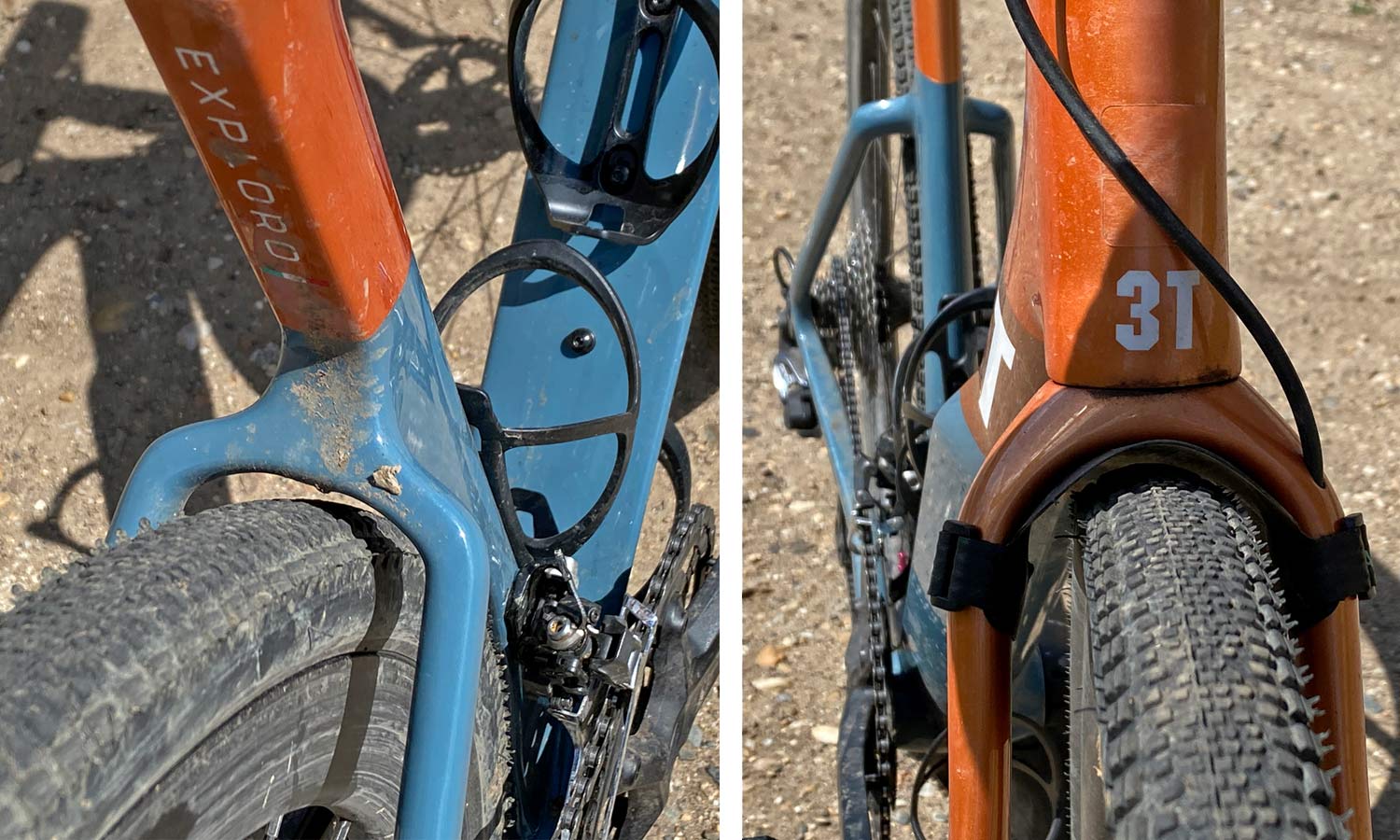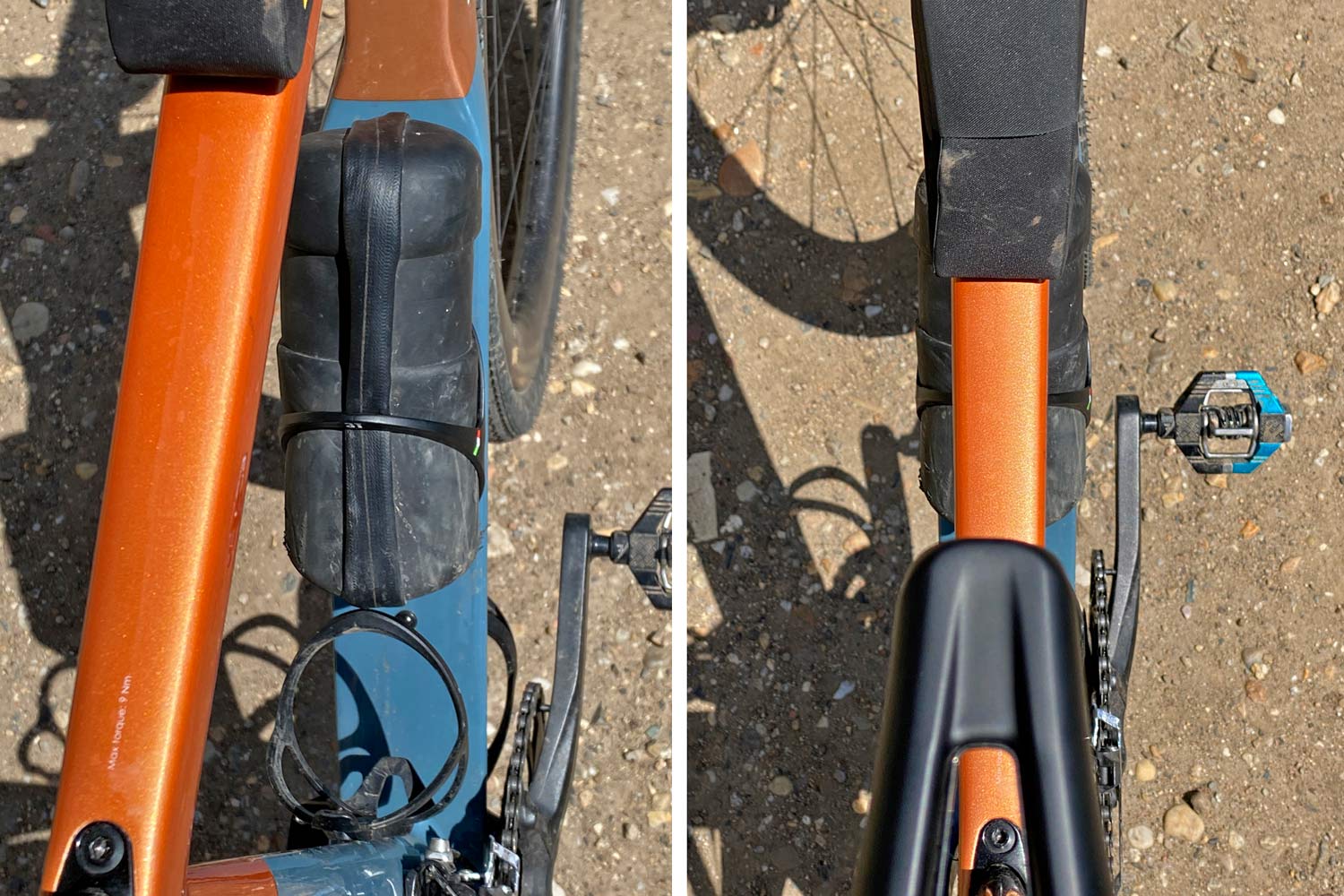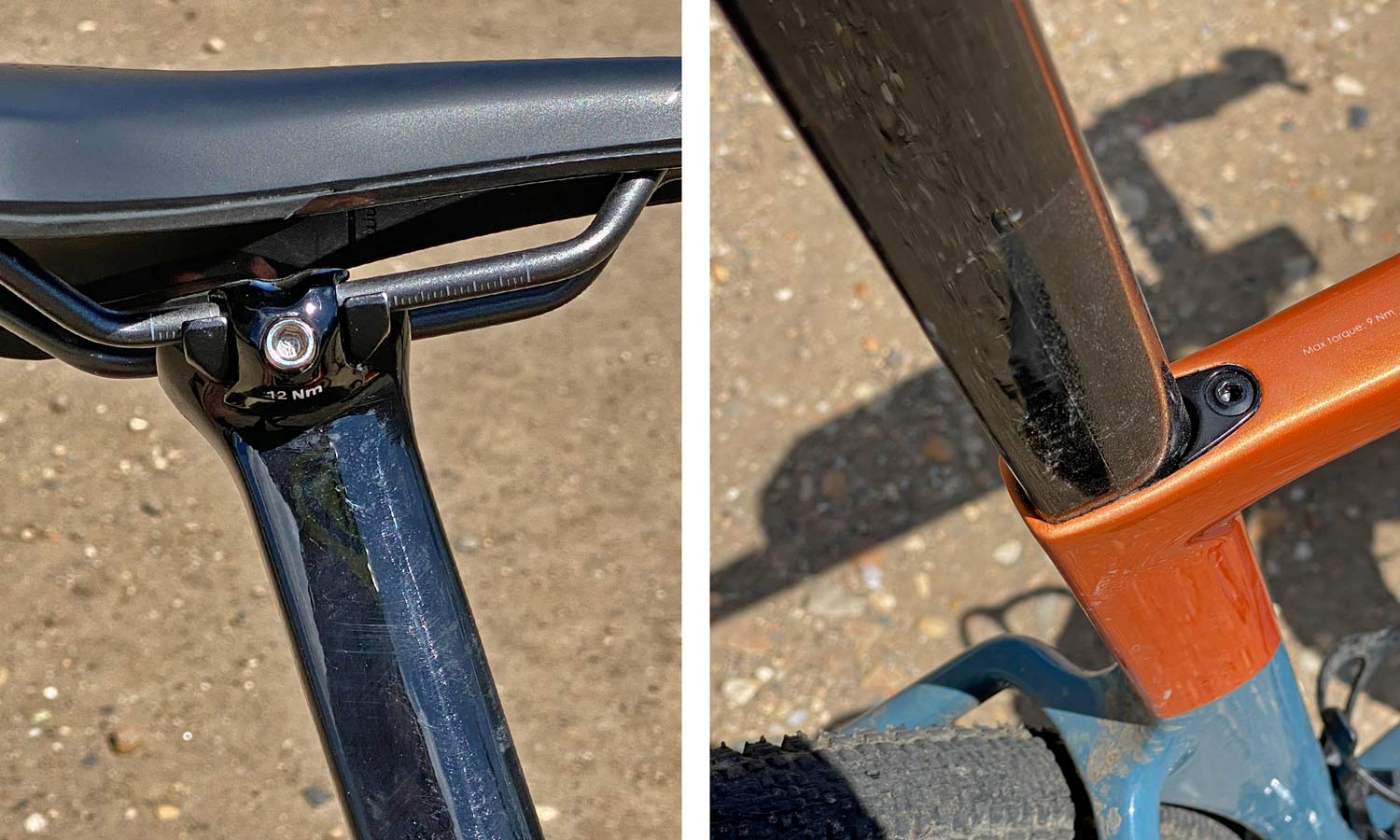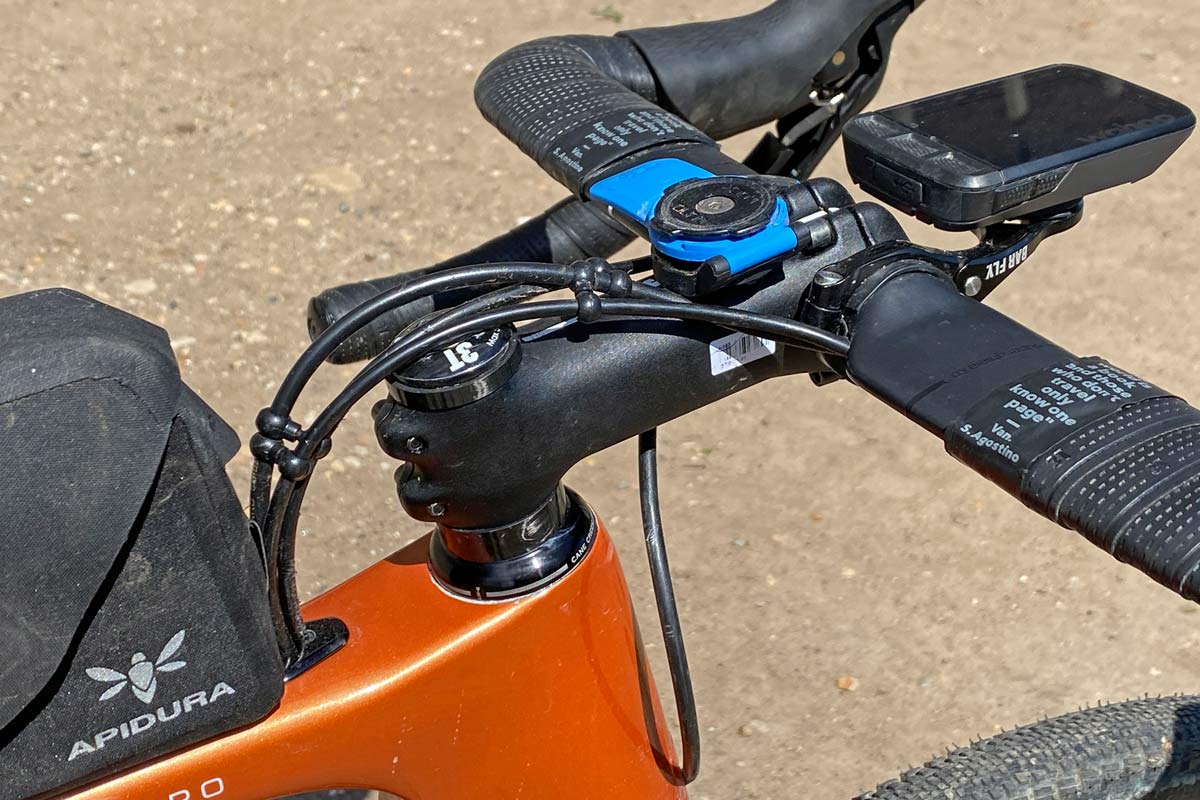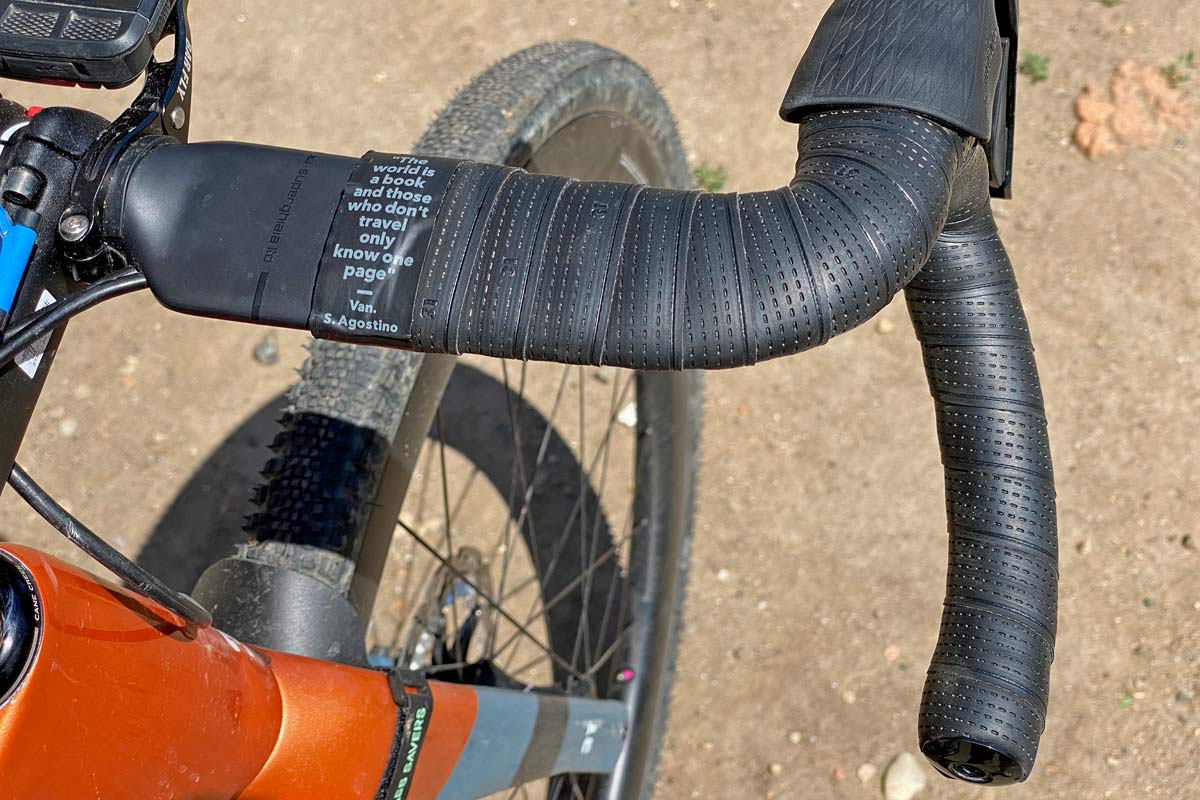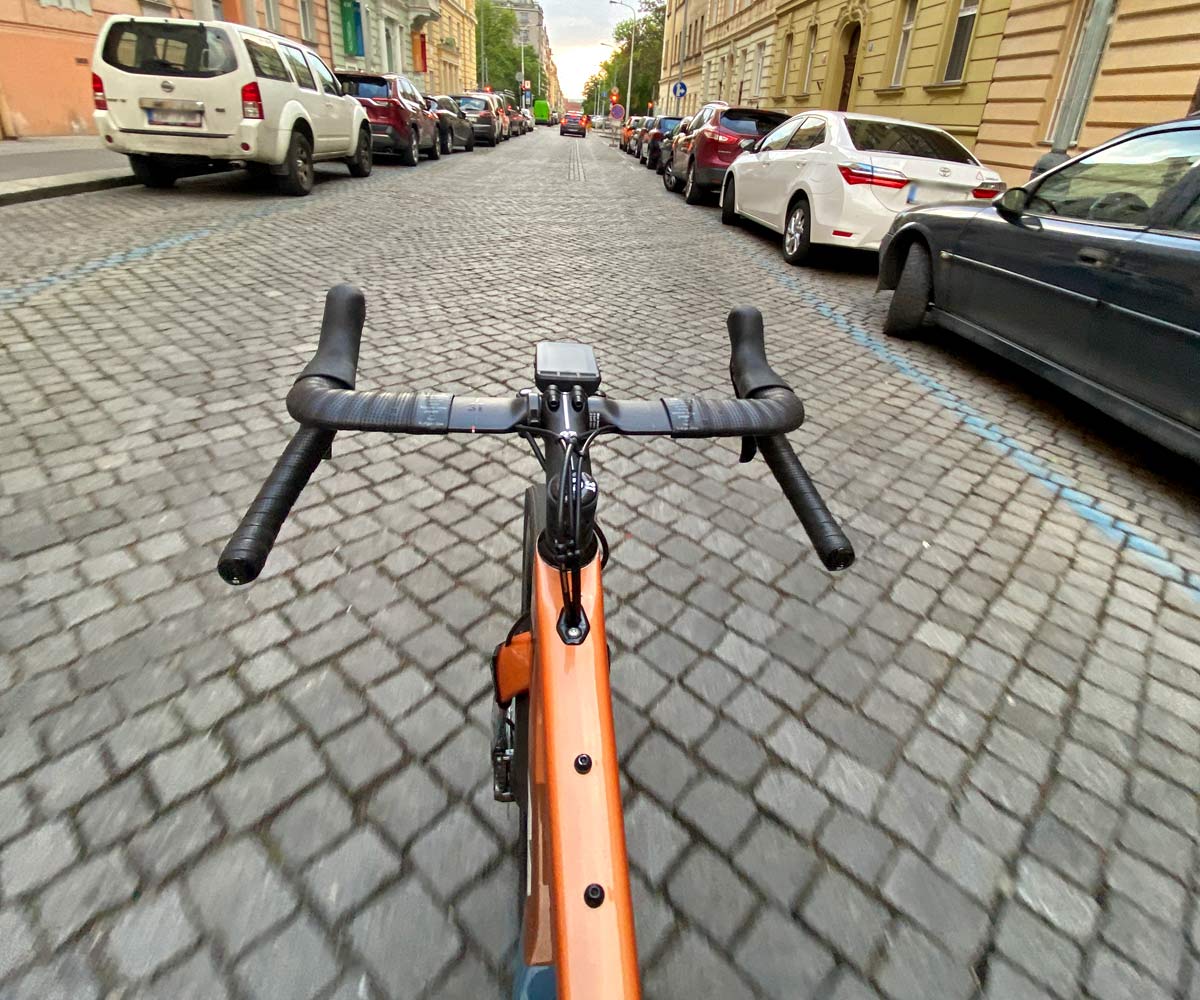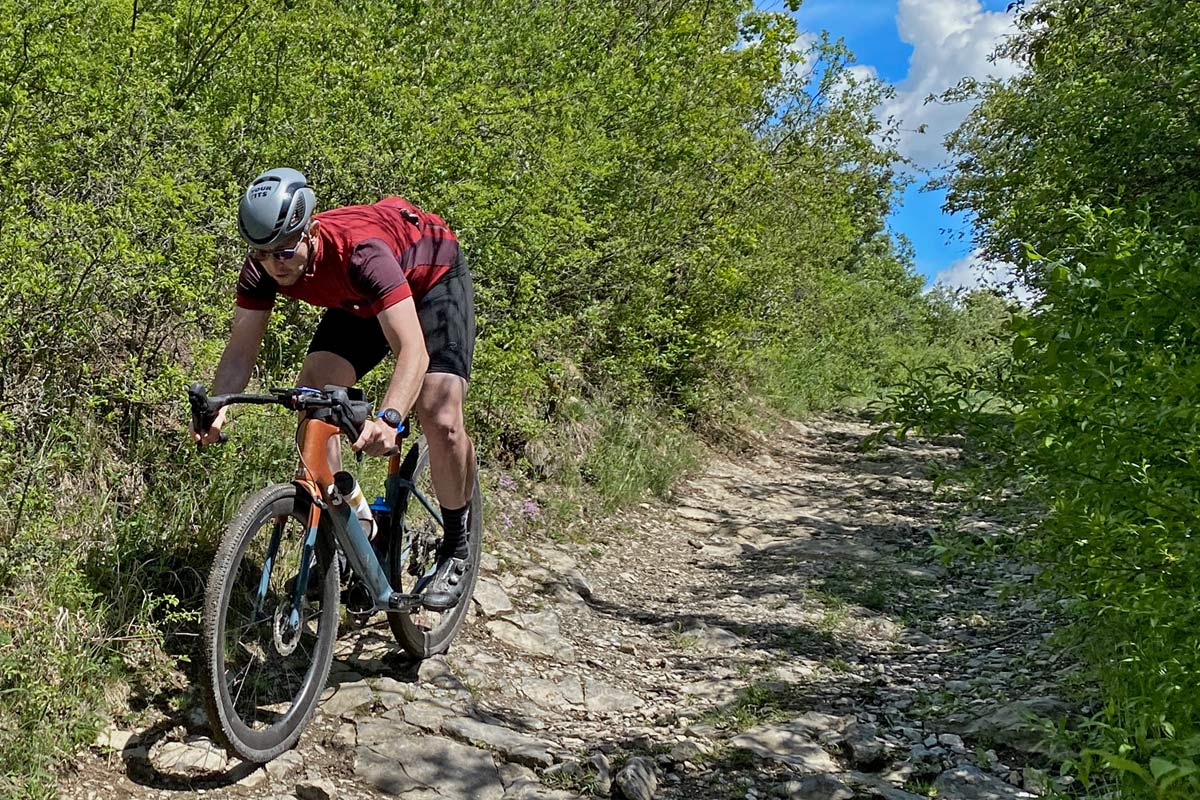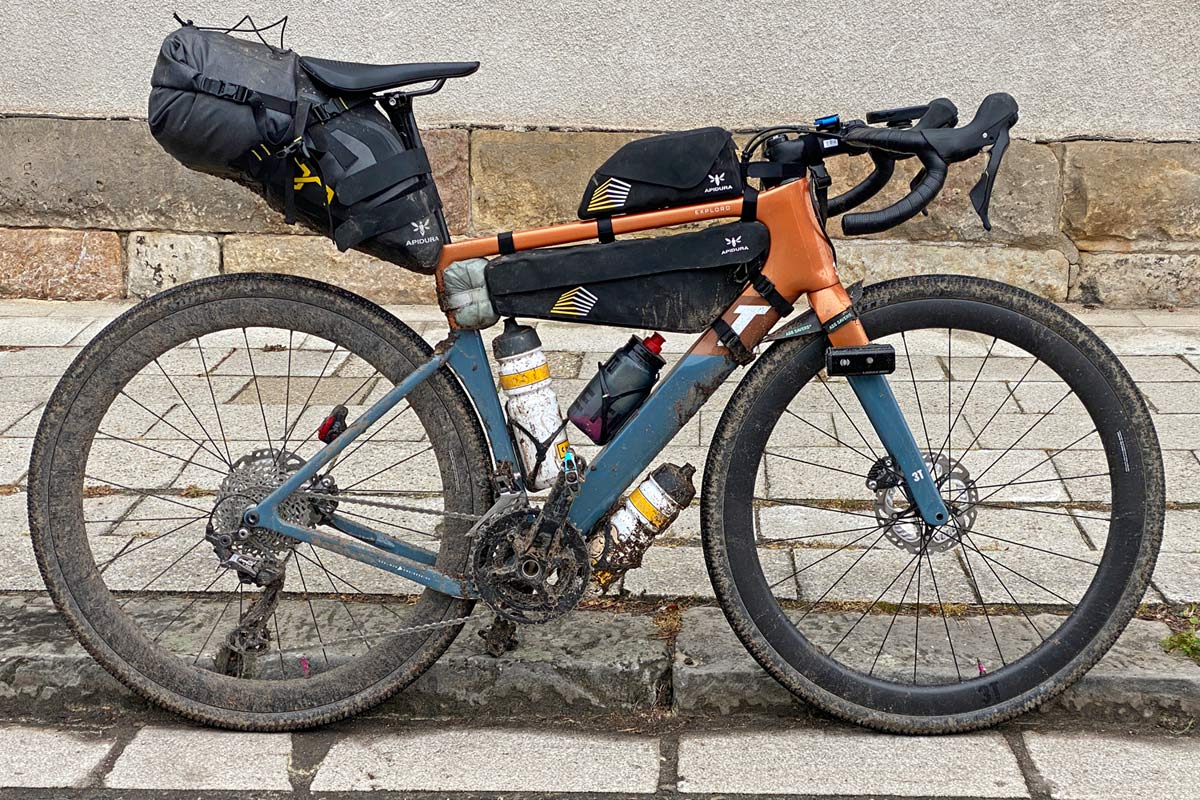Yesterday, 3T unveiled an all-new Exploro RaceMax gravel bike meant to make you either ‘go slow, but a bit faster’ or if you prefer, to ‘go faster, but slowly’ because you are off-road. It’s your choice whether you look at it from a gravel racer’s perspective, or from the eyes of someone just trying to make it a few extra kilometers before they make camp for the night. In either case, we’ve been riding this latest iteration of 3T’s aero gravel bike for a few weeks now. And I can confidently say it’s every bit the racer the Exploro has always been, but more capable & quicker than ever…
3T Exploro RaceMax, all-new carbon aero gravel bike
Going slow, faster is the general wisdom behind aero gravel – many gravel road riding cyclists spend large swaths of time out riding on their own – solo in the wind, or at most in small groups. That could be the description of almost all of my riding since the start of the COVID-19 pandemic. We’re in the opening up stages here in the Czech Republic where riding in pairs is working well. But as we are confined inside the national borders, it’s also meant testing closer to home.
One plus side to that, is a lot of opportunity for short bikepacking trips within Bohemia. Ride as far as time allows, then hop on a train to come back home at the end of the weekend. So, I’ve packed up the Exploro RaceMax with a full suite of gear – tent, food, water, plenty of clothes for cold nights in the hills, and everything nice & waterproof since it’s decided to add heavy rain to the cool spring.
It’s been a good chance to see how the bike handles on & off-road, loaded down with gear. Plus, it’s been good to see how it handles mud with those tight aero wheel cutouts.
Going slow, but faster than normal.
But then, just as the rains came, so did the blue skies return (and clear nights). That mean off with the bags, and into gravel racer mode. To be fair, there are no actual races these days, and even #dirtykanzelled wasn’t going to motivate me to push all day at a race pace. But I still had a good chance to hammer on the RaceMax in its regular lighter setup and spent plenty of time riding solo out in the wind.
Going fast, but slower than normal.
Exploro RaceMax – Geometry, Fit & Sizing updates
Probably the most noticeable update to the fit of the new bike is a much taller Stack (37.5mm higher on the new RaceMax 56 vs. the Exploro M). So interestingly, to keep the same fit I had from the original Exploro onto this new Exploro RaceMax, I actually sized down from an M to an S (54).
(The OG medium had a S/R of 546.5/378mm. The new RM 54cm has a S/R of 564/377mm.)
Now, I’ve been riding around in a not exactly #slamthatstem position with just one 10mm spacer under the 110mm stem for my mostly ‘going slow, faster’ test riding. But if I were to get serious about racing this bike, that 10mm spacer would get dropped quickly. And taller, more flexible, or riders with even more aggressive positions on the bike will be looking for dramatically negative rise stems to dial in their most aero fit.
Beyond that Stack:Reach tweak: my head angle & chainstays were unchanged, seat angle steepened 1°, BB dropped 7mm, and the fork axle-to-crown was shortened by 25mm to create a longer headtube. Finally, I got an extra 4mm of fork offset for 64mm of Trail, down 4mm if I had the same tires on the older Exploro. (In reality, I spent most time on a 650×47 setup on that older bike which was only 1mm difference in Trail.)
As you see, small tweaks here.
2020 3T Exploro Race GRX 2x complete bike setup
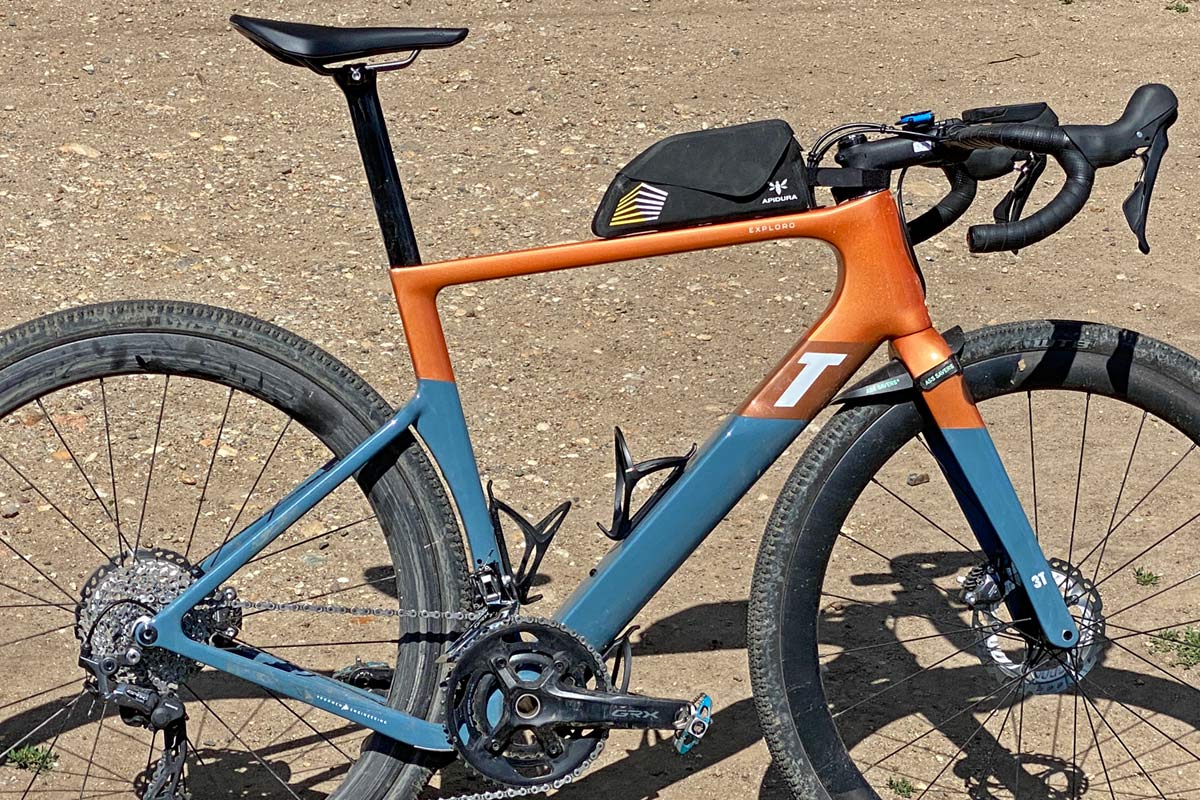 So let’s talk how the bike was actually set up, since 3T’s naming scheme is a bit confusing. This frame is the new 3T Exploro RaceMax. This build is the 2020 3T Exploro Race GRX 2x. That means it is a RaceMax frameset, built up in Race-mode of 700c wheels, and with a Shimano GRX 2×11 mechanical groupset.
So let’s talk how the bike was actually set up, since 3T’s naming scheme is a bit confusing. This frame is the new 3T Exploro RaceMax. This build is the 2020 3T Exploro Race GRX 2x. That means it is a RaceMax frameset, built up in Race-mode of 700c wheels, and with a Shimano GRX 2×11 mechanical groupset.
Curiously, 3T specs a SRAM 11-speed cassette to get the 11-36 gearing that they want to go with the GRX 46/30T chainrings. Officially, the GRX RX-810 derailleur maxes out at a 34T cog, but we all know by now that you can push Shimano derailleurs a couple teeth further. (It also looks like there is plenty of room for a 50/34 compact road chainring set there too.)
My test bike was built up with a pair of 700c carbon 3T Discus 45|32 LTD wheels with a 25mm internal width, wrapped in 37c WTB Riddler tires (which I set up as tubeless with a Muc-Off kit). These are a recommended setup from 3T with a WAM of 39mm & a RAM of 352mm, but are not what is included as standard on the bike.
Beyond that stock setup, I squeezed an Ass Savers Mudder Mini fender inside there mainly to keep splatter off my glasses when cornering (normally the massive downtube is a sufficient fender), a direct mount Apidura Racing toptube bag to carry snacks, three light nylon bottle cages for water, and a couple of bar mounts for GPS & mobile phone/camera.
To take the Exploro Race GRX 2x bikepacking, I added Apidura Expedition saddlebag & accessory pouch on the bar, plus a Racing frame bag. The new Apidura Packable backpack came in handy for hauling beer in the rain, while I sat under a tree in a Gore-Tex jacket fixing a broken chain that resulted from mechanic-error (not mine, this time.)
Exploro Race GRX 2x – Actual weight
As it sits, the retail price of the Exploro Race GRX 2x with carbon 3T wheels would be $5800 / 5800€. The resulting actual complete bike weight ended up at 9.32kg (20.5lb) kitted out to ride with:
- a 100g Apidura Racing Bolt-On Top Tube pack,
- a 42g Quad Lock Out Front mount,
- a 32g Bar Fly Race Mini Wahoo mount,
- a 20g Ass Savers Mudder Mini front fender,
- a 320g set of Crankbrothers Candy 7 pedals, and
- 3x 28g low-cost Decathlon Triban water bottle cages, one of which happens to have 3T branding.
All of those accessories essentially have joined me on every ride with this bike, but for an apples-to-apples comparison, that means the GRX 2x bike-only weight is actually 8.72kg (19.2lb) with carbon wheels & tubeless Riddlers.
It’s not crazy light, but GRX 2x is going to be the heaviest build overall (with plenty more options available). And if aero gainz are to be believed, it’s gonna make you faster.
Exploro RaceMax Race GRX 2x in details…
I’ve talked bike detail, but how do those details work in practice?
The new Exploro RaceMax promises bigger tire clearance. These 700x37c Riddlers measure a real 40mm wide (WAM) and 352mm high in radius (RAM). That’s essentially the upper measurement in height that 3T recommends for the bike. And if you want to go wider, you’ll have to drop down to 650b, where you’ll find plenty of 27.5 x 2.1-2.25″ that aren’t any taller.
I’ve ridden his bike on some really wet gravel roads, active dirt roads being logged, and a decent amount of rim deep mud while loaded down with bags (see how clean that rear wheel is?) Surprisingly to me, mud clearance was never an issue at all – front or rear.
Mud did build up a bit on that tiny monostay (scroll down to see the end of my wettest, dirtiest day). But the most constrained point is right there at the seatstay, so mud got sliced off the top of the tire before it made it into the rear wheel cutout, with the front fender doing the same thing. Surely, sticky mud is going to cause trouble, especially with wide tires that fill out the free space. But I think it will be a minimal issue with a 700c build.
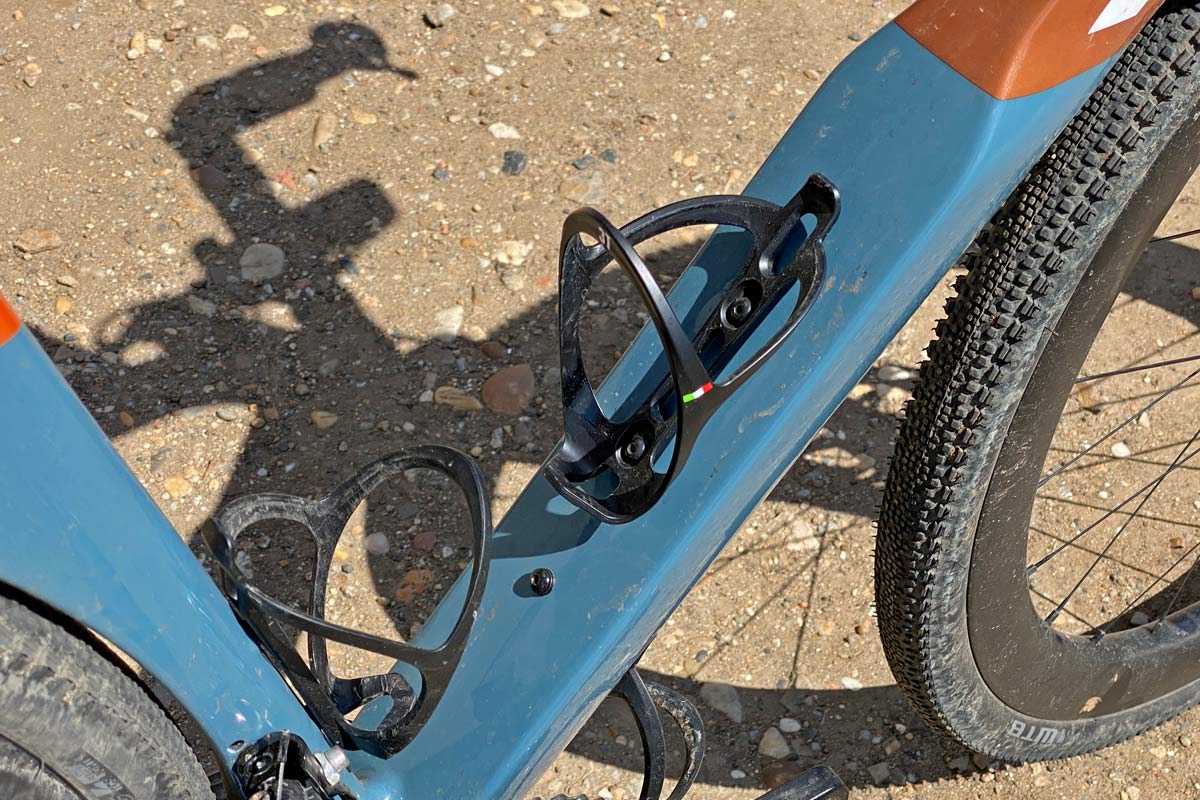
The RaceMax includes the now common adaptable two-bottle layout we often see on aero-focused bikes. If you run a single bottle, it’s generally thought to be more aero with one cage on the downtube in the lower set of bosses. Even in the upper 2-bottle position a 17cm tall 500ml bidon sits just below the wider 73cm (actual) lower section of the downtube. (A 24cm tall 750ml bottle tops out at the same place in the lower set of bosses.)
The massive RaceMax downtube tapers from ~73-74mm with just so happens to be the diameter of my largest Tacx bottles, tucking them out of the wind. The only thing I ever put in a cage that is larger is a max 80mm diameter zip-up tool & spares carrier, and even that is almost entirely hidden behind/above the giant aero tube shape.
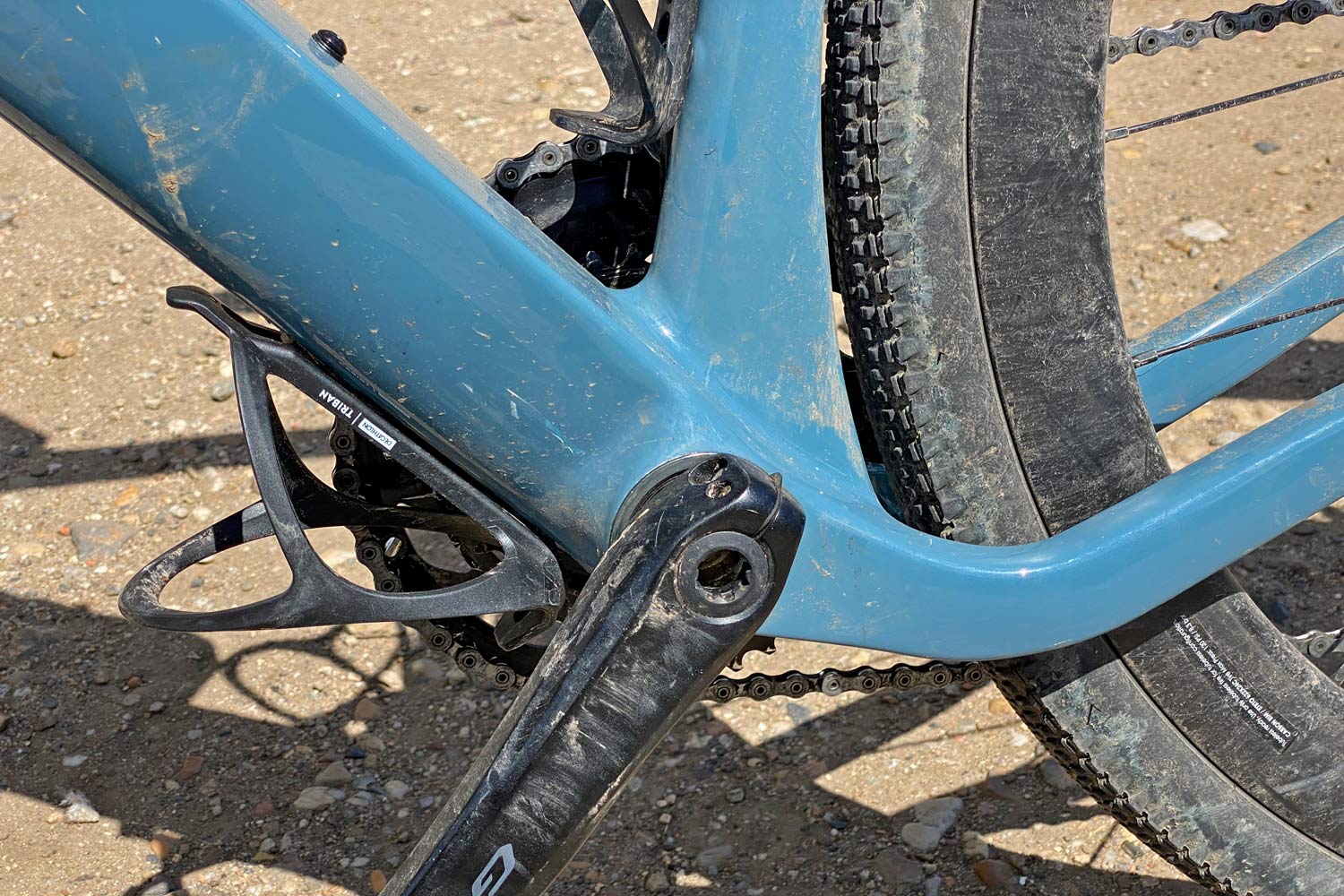 The new frame drops both chainstays low, behind the BB386 bottom bracket to get the most out of rear tire clearance. The downtube is still a huge 72mm wide down here, providing plenty of space for a welcome third bottle cage mount.
The new frame drops both chainstays low, behind the BB386 bottom bracket to get the most out of rear tire clearance. The downtube is still a huge 72mm wide down here, providing plenty of space for a welcome third bottle cage mount.
The bike has a relatively low bottom bracket 77mm on my 54cm test bike (which is synced with shorter crank arms on the smaller bike sizes). Personally, I might be a little worried about flying gravel impacts here, which is probably paranoid (and something I’d guess 3T figured into their layup.) In any case, the low-cost but secure nylon cage gives me an extra sense of protection security even without a third bottle in place, with probably zero aero downsides and just an extra 28g.
The thinner driveside chainstay does include a stainless plate on its bottom to guard against chainsuck damage.
This seatpost is a big improvement in versatility over the original Exploro, with the move to a simple Ritchey 1-bolt set of seat guts that attached to the top of the proprietary D-shaped aero carbon seatpost. That means easy & secure saddle adjustment (even though you lose the damping of original elastomer). It is also easier to set up your bike from round to oval saddle rails. I even experienced that large diameter original Exploro Charlie post head interfering with a very flexible saddle top, which is no longer an issue in the low-profile Ritchey head.
Bonus points: This new seatpost also fits the existing Exploro. So start hitting up 3T now to ask to buy a new post for your old aero gravel bike. (It’s not yet listed as a replacement spare part from 3T, but eventually should be once they have plenty in stock.)
The drop-in, wedge-style seatpost binder is also a big improvement over the original Exploro, with easier access using a multi-tool or a shop torque wrench. But this update isn’t really new, having already made it to all of the current Exploros a couple of years ago.
Probably my only serious nit to pick with the new Exploro RaceMax is its cable routing. It keeps the same single modular port behind the headset for shift & rear brake lines with no internal routing channels. Big cable loops inside can ensure smooth mechanical shifting, and foam housing wraps will eliminate rattling noise, but many riders fail in one or the other (at least when it comes time to replace housing.)
Sure, a 1x would eliminate one shift housing; wireless AXS would eliminate two; but you still need a rear brake line that loops over the top of the stem. And let’s not forget that front brake line rubbing against the headtube before it goes into the left fork leg.
On an aero gravel bike, that convenient bolt-on toptube bag is the perfect spot for on-the-go race snacks. But this cable routing pushes it back 4.5cm from where it could be tucked neatly behind the stem. The position of the single port is ostensibly for less aero drag, but that feels negated by the front brake routing, the gap to the toptube bag, and the tangle of wires (and those little cable ball spacers) that result.
I know that completely internal cable routing is a pain in the butt to set up & adjust, and requires a proprietary headset (the RaceMax already has one of those down below, anyway). But if any gravel bike deserves to get full internal routing, this is the one for it.
Leaving cable routing aside, can I take a moment to say that these carbon 3T AeroGhiaia LTD flared aero gravel bars are great. They are even the ultra rare, mislabeled SuperGhiaia LTD first run edition.
The new Prendo Speed bar tape is nice & just tacky enough, and the quote that captures my vibes during our national lockdown…
“The world is a book and those who don’t travel only know one page.” – Van. S. Agostino
The AeroGhiaia mixes slight ‘multi-flare’ drops (exaggerated here for effect by my wide lens iPhone) with flat & comfy aero tops. The hoods stay mostly straight (7° flare actually) & narrowly spaced (42cm for mine). Then, they get just enough length of 35° flare at the bottom for off-road control out to 50cm (again c-c) at the ends of the drops.
My only micro-trouble is that they only have about 11mm of 31.8mm clamping area next to the Apto stem (~55mm total round clamping width), which is a tiny bit too tight to fit the alloy Quad Lock Pro mount that I would prefer to use. Oh well.
Update: Just to be clear, Only the Max AXS complete build includes this bar as standard spec, although 3T has suggested that they will be available as an upgrade in the future. All complete Exploro RaceMax GRX bikes include an alloy 3T Superergo bar & all Max AXS bikes get the carbon Aeroflux bar, both with more subtle 6-7° flare.
Review: Exploro RaceMax – Riding Impressions
Off-road
With all that said, the new Exploro RaceMax is a much more capable off-road riding gravel bike than ever. 3T’s tricks of getting the fork crown lower for a bigger/stiffer headtube, dropping bottom brackets for lower center of mass, and measurably bigger tire clearance, have all made a bike that tackles technical terrain more readily. And even with that massive, giant downtube, it never felt like an overly harsh ride.
One of the biggest improvements in my mind is simply more clarity of which tires this bike was designed for. By giving real tire + rim WAM & RAM data, buyers can make informed decisions of what tires to purchase for their style of riding, while maintaining the designed in ride characteristics. When I look back to the wide range of tires & rims I rode in the old Exploro, it’s a stark reminder that gravel is the wild west of cycling. I’m happy that 3T has started compiling real tire+rim data, and to be honest, I’m gonna be stealing it taking advantage of it, even when riding other company’s gravel bikes. (Sorry, not sorry, Gerard.)
Gravel
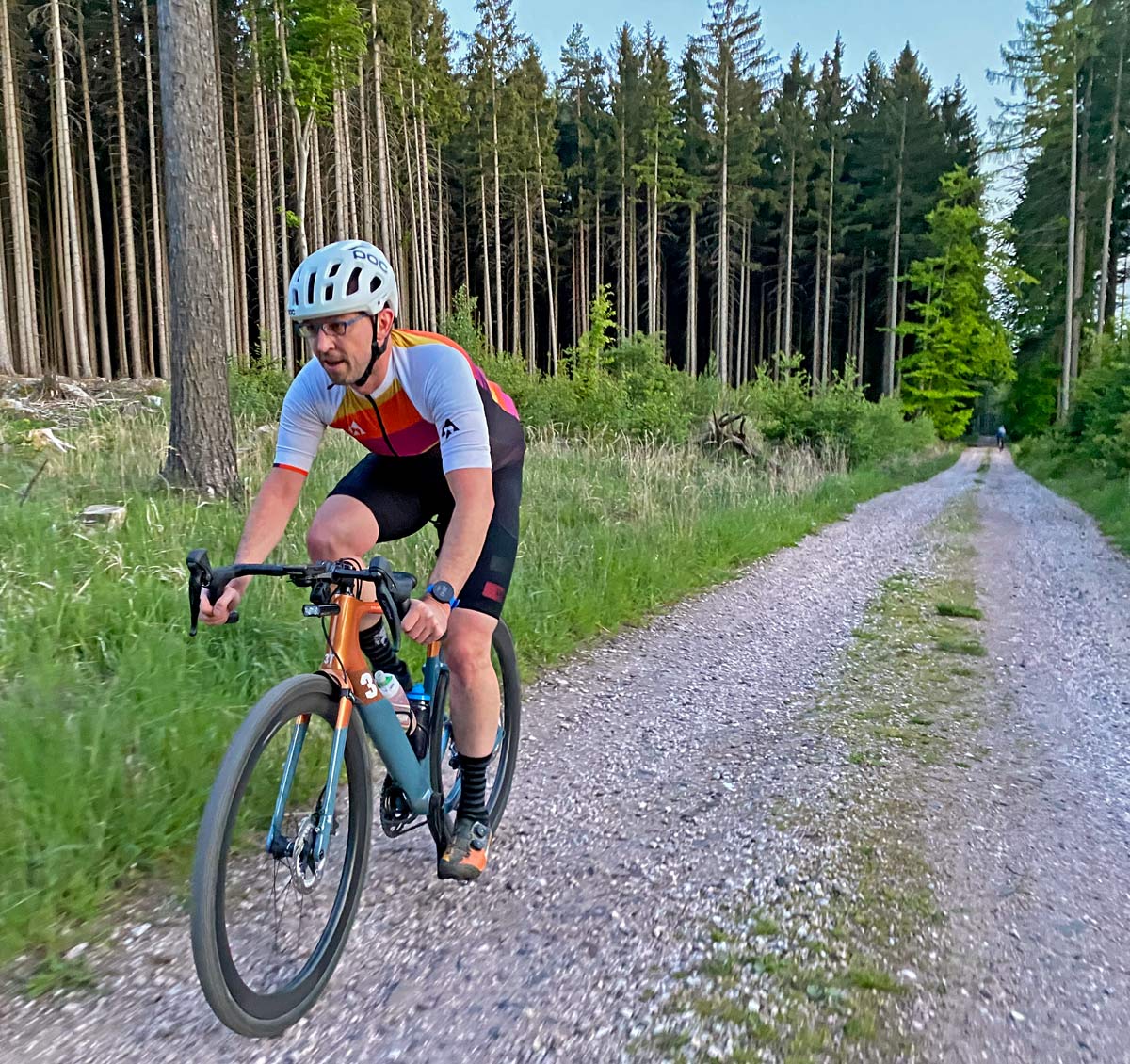 Looking at the gravel Race side of RaceMax, aero gains are going to help me go faster, even though I’m probably riding slow. Every bit counts, right? With steep for gravel geometry, the latest evolution of the Exploro does make me feel quick on smooth gravel roads, and is even a blast to bomb down paved roads at high-speed.
Looking at the gravel Race side of RaceMax, aero gains are going to help me go faster, even though I’m probably riding slow. Every bit counts, right? With steep for gravel geometry, the latest evolution of the Exploro does make me feel quick on smooth gravel roads, and is even a blast to bomb down paved roads at high-speed.
A big part of this is a good road tire & aero rim combo too. Low profile, fast-rolling tires like these actually 39mm wide WTB 700x37c Riddlers make the bike feel great on all surfaces, and drift predictably in the wet. (And yes, my actual measurement matched 3T’s WAM chart.) Again, having that tire WAM/RAM chart has me thinking what other tire combos I would want to try that deliver the exact same handling.
Bikepacking
And lastly for the Max side of the equation where I get to go slow, but faster, the new Exploro RaceMax seems to mix off-road & gravel capabilities well. It’s certainly not the only option for bikepacking, and many will argue that the added durability of a metal bike makes a ton of sense when you are going to strap another 10kg of gear to your bike.
But what the RaceMax does best is versatility. I rode this bike deep into the dark & rainy woods one night, loaded down with all the cool & wet spring weather gear I needed (plus some extra beers and a drone to shoot video in the rain & fog for fun). The rode the entire next day on soaked singletrack, muddy logging roads, wet gravel roads & finally smooth tarmac. At the end of the ride, I simply hosed the bike off & hopped on a train home. Then simply unstrapping the big bags, I was ready for gravel Race mode again the next day.
And if this bike stayed in my quiver (instead of heading back to 3T soon), that’s likely the life it would live. Ride, rinse & repeat… across all manner of off-road, gravel & bikepacking adventures.
